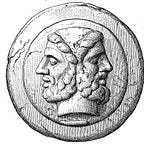Slicing down DAI, aUSD and lUSD
This blog compares three crypto-backed stablecoins: DAI, lUSD and aUSD. They are all pegged to USD, but use different types of crypto asset as collateral and apply different stabilisation mechanisms to keep the peg to USD.
TLTR
- DAI and lUSD run on the Ethereum blockchain, whereas aUSD is available in all Polkadot ecosystem, as it is deployed to Acala
- Both DAI and aUSD use DEX to liquidate the under-collateralized positions.
- aUSD can be minted with staked DOT as a collateral
- lUSD introduce a stability pools, which act as first layer of defense to keep the peg to USD
- The chart below presents key comparison between aUSD, lUSD and DAI
Introduction
There are almost 100 stablecoins, but not all of them deliver on the decentralization promises of blockchain and DeFi. Theter, for example, is a centralized crypto-currency that build reserves in fiat USD (fiat-backed stablecoin).
Crypto-backed stablecoins relay only on crypto assets to maintain peg to the target value, such as USD. Quite often they are governed by DAO and the code is open. The reserves are fully transparent, as it is hosted on the blockchain.
You can ready about the stablecoin classification in the blog post — Ultimate Stablecoin Classification or have a look at the diagram below:
DAI, lUSD and aUSD are leading examples of decentralized, crypto-backed stablecoins. Although similar, there are not entirely the same and it is worth being aware of those differences.
DAI — largest crypto-backed stablecoin
The stablecoin DAI is, in the time of writing, the 1st largest in terms of market capitalization stablecoin on-chain collateralized stablecoin. Operating on the Etereum blockchain, it utilizes various crypto-assets as collateral: Ethereum, Bitcoin, equity tokens and other stablecoins. The stablecoin collateralization is fully transparent.
The figure above presents the current breakdown of DAI collateral with almost half locked in stablecoins, one third in Ether and only around 11% in Bitcoins. Any blockchain user is allowed to mint DAI, for example, using Oasis https://oasis.app/.
The stabilisation mechanism, which DAI applies to maintain the peg to USD, is presented in algorithm:
The DAI stablecoin protocol is governed by the DAO, consisting of the holders of its governance token — MakerDAO. Any blockchain user is allowed to buy MakerDAO and participate in the DAO votes.
Use case — lUSD
The stablecoin lUSD is the 13th largest in terms of market capitalization stablecoin, in general. It also operates on the Etereum blockchain. Unlike the DAI stablecoin protocol, which accepts various types of crypto collateral, lUSD coins can be minted only using Etereum as a collateral. Any blockchain user is allowed to mint the coin. The lUSD stablecoin protocol, called Liquity, applies a specific stabilisation mechanism — the algorithm below.
It introduced the stability pool, which covers potential losses created in the forced redemption process. Any blockchain user can subscribe to the stability pool, which also offers participation if the potential earnings created during the forced redemption process. The most significant difference between the DAI and lUSD is the last layer of the stabilisation mechanism. This layer is initiated only if case of failure of all previous layers in order to preserve the peg to the USD. Whereas DAI is to sell its governance tokens to cover the protocol’s losses, the lUSD is distributing the losses among the creators of the vaults.
The lUSD is not governed by DAO. The key risk parameters are calculated algorithmically.
Polkadot and Acala Stablecoin — aUSD
Unlike DAI and lUSD, which are deployed to the Etereum block- ckain, the aUSD stablecoin operates on the Acala blockchain. The Acala blockchain is a parachain — layer 2 chain — of the Polkadot blockchain. The stabilisation mechanism of aUSD corresponds to the one of DAI. As being deployed to different chain, the aUSD protocol accepts others crypto collateral types: ACA (currency of the Acala chain), DOT (the currency of the Polkadot chain) and staked DOT.
The Acala blockchain and stablecoin are governed by a DAO, with a foundation incorporated in Singapore.
Closing Thoughts
The stablecoins DAI, lUSD and aUSD offer all benefits of the crypto-backed stablecoins such as full transparency in the reserves, public access to the source code and permissionless creation process that allows any blockchain user to mint stablecoins. The similarities and differences are summarized in figure below
Crypto Wealth Management article series:
- Where do Wealth Managers stand on Crypto?
- How Crypto elevates Wealth Management
- Behind the scene of Defi. Introduction for Wealth Manager
- From TradeFi to DeFi? Getting-started Guide for Wealth Manager
Stablecoin article series:
Join Coinmonks Telegram Channel and Youtube Channel learn about crypto trading and investing
Also, Read
- 10 Best Places to Buy Crypto with Credit Card
- Best Cardano Wallets | Bingbon Copy Trading
- Best P2P Crypto Exchanges in India | Shiba Inu Wallets
- Top 8 Crypto Affiliate Programs | eToro vs Coinbase
- Best Ethereum Wallets | Cryptocurrency Bots on Telegram
- Best Exchanges to Trade Leveraged Tokens | Buy Floki
